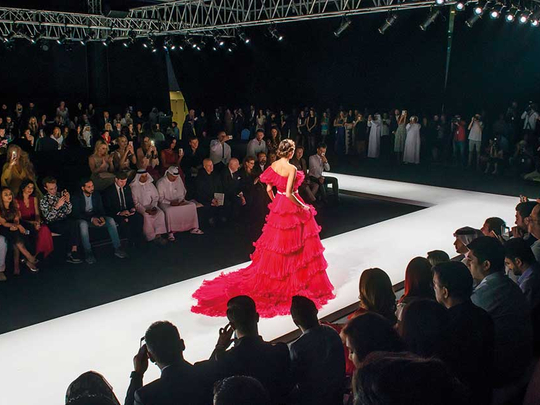
Dubai
Arabs got the talent... but the region’s fashion design scene beyond the catwalks remains in a pretty bad shape.
Jacob Abrian |
“There’s absolutely no system in place to support the design industry,” said Jacob Abrian, CEO of Arab Fashion Council, an industry grouping that now intends to do much more than spread the word of home-grown possibilities for the industry. “There’s a huge process that needs to be behind it — sourcing of fabrics, colour, manufacturing to product display and merchandising. That system is completely absent here.”
Nothing less than a stinging indictment, but Abrian believes that what makes a Paris or an Italian city a crucible for fashion and trend-setting exists in the region. “Each region in Italy has built up strengths to support facets of its fashion business, like Florence for its leather goods and Naples for menswear,” said Abrian. “It can be recreated here.”
The Arab Fashion Council now wants to create a structure around which fashion designers from within the region can be discovered and get a chance to thrive.
It would mean that “North African markets are tapped for the raw material resources, the Levant for their manufacturing and huge knowhow — think of Morocco for its traditional embroidery expertise — and the Gulf markets for their retail and marketing experiences,” said Abrian. “It’s a golden age for retail in the Gulf and the domestic fashion industry needs to make full use of it. All of these need to be utilised to be truly productive as a region.”
That’s the whole rationale for Arab Fashion Council, in that it does not seek to be the voice for just a handful of key markets but representative of the 22 economies. It was founded in 2014 in London by regional fashion “pioneers” and has worked to position the Arab Fashion Week alongside the other four annual marque events in New York, London, Milan and Paris. The latest edition of the Arab Fashion Week opens on Tuesday (May 16).
But hasn’t the spread of the web and online buying made it easier for wannabe designers to break through to a higher public profile?
“Online, as far I can see, has been a double-edged sword,” the CEO said. “It’s been affecting retailers with exclusive marketing rights to brands. Shoppers come to their shops to try out dresses and then invariably seek out cheaper alternatives online.
“It’s forcing several designer shops to shut down. It’s part of the wider problem that’s related to not having proper systems in place.”
Abrian disagrees vehemently that local and regional fashion designers did have a good year or two until the 2016, when the entire retail sector felt the pinch of lower consumer support. “Arab talent never ever had a good year — for the reason that there’s never been a system to support them.”
A proper turnaround would have to begin at the garment factory floor — AFC’s action plan has provisions for bringing existing and struggling factories under its umbrella and then go about modernising them. Jordan’s textile factories could benefit from such largesse. Abrian believes that entities such as Unido (United Nations Industrial Development Organisation) can be tapped to support traditional ways of production.
A concrete plan could be formalised before the year end and then in a further three years have the processes in place to push for exports in a significant way.
“By 2019, the region is expected to import $490 billion worth of luxury fashion — it’s time that the Arab fashion world can push back with exports of our own.”
Of late, AFC has been receiving high-profile support... it has aligned with the Shaikh Mohammad Maktoum Juma Al Maktoum Investment (MBM) “recognising major synergies both groups can offer with an aim to continue promoting and positioning the Arab fashion industry on a global level”.
“We can facilitate business and financing facilities from investors for the needs of the region,” said Abrian. “And that effectively means creating a chance to transition local talents into brands of their own.”
Of late, there has been a lot of talk about “modest fashion” and how it has opportunities to create a global audience. And that would bring the spotlight on regional fashion trends and the people behind them. Abrian, however, sees it somewhat differently — “It’s a trend whereby one global fashion brand launches an abaya collection and others follow. The Arab fashion world can benefit only if they create something for the region and then export those trends.”











